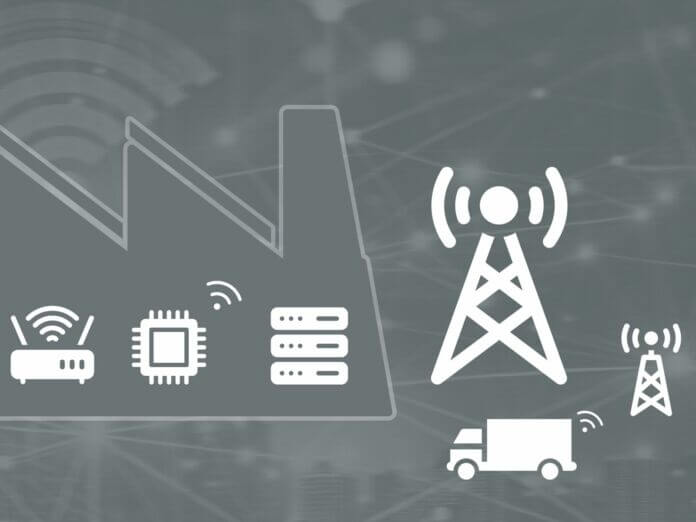
Datablaze – October 31, 2024
Collected at: https://www.iotforall.com/blending-public-and-private-cellular-networks-for-better-iot
These days, every business could benefit from IoT. That includes some use cases you might not think of as particularly tech-forward.
Take a state fair, for instance. Along with cattle and corndogs, you’ve got point-of-sale machines. You’ve got credit card payments. You send business data back to a central office. You might even have condition-monitoring systems to make sure your rides stay safe.
However, fairs tend to operate far from public networking infrastructure. You’ll have to set up your private network to collect data from your devices. To go outside your network—connecting with your office, with credit card processors, and with cloud-based services—you need a backhaul link. In other words, you need access to the internet.
Private Cellular
What form of connectivity covers both intra-network communication and external backhauling at once? Satellite is expensive. WiFi is more consumer technology; it can’t guarantee service for your critical systems. A private cellular network is closed off from the internet, while a public one can be vulnerable to congestion.
The best solution for this and many other use cases combines private and public LTE or 5G cellular networks: A private network at the edge and public waves for backhauling. Here’s why and the simplest way to build such a hybrid IoT connectivity system.
The Benefits of Blended Public/Private Cellular IoT
Whether you use LTE or 5G technology, private cellular networks have a lot of advantages for IoT deployments.
- Private networks are incredibly secure. Your network stands outside the open Internet, making it virtually impenetrable to attackers. This is on top of cellular connectivity’s already strong security, which includes radio encryption by default.
- You control throughput. The biggest drawback of relying on a mobile network operator (MNO) is a lack of control; you have to share the bandwidth, which leads to congestion and short-circuit dependability. On a private network, you control the data flow. You can write rules to ensure that critical infrastructure always takes precedence. In short, you have much more reliable connectivity.
- You achieve lower latency and higher speed. With your dedicated bandwidth, you can ensure the lowest possible latency and the fastest data transmission within your network.
However, private cellular networks do have drawbacks for IoT. They limit your range of coverage and need dedicated channels to connect with external nodes. That’s a huge consideration since your system will likely process data in the cloud or aggregate analytics in a cloud-based platform.
Public networks excel at these tasks. And that’s why connecting your private network via public cellular signals can give you the benefits of private LTE or 5G, along with the versatility of a traditional MNO relationship.
These advantages make blended cellular networks ideal for common IoT use cases: smart agriculture, smart buildings, smart healthcare, and more.
Blended Network Example
Take a smart warehouse, for instance. Many of the IoT systems function locally: forklift tracking, Zebra scanners, condition monitoring, HVAC, lighting, and security. All of these systems will run most effectively on a private cellular network (which, it’s important to note, supports mobile devices much better than hard-wired networks).
But what if you need to report all this data to your corporate office? What if you use cloud-based processing or storage? What if your system continues to track shipments after they leave your facility?
For these tasks, public cellular connectivity provides a better solution. Again, you need both. Next, we will discuss how that’s possible.
Connecting a Device to Private and Public LTE/5G Networks
If blended public and private cellular networks are so great, why isn’t everyone already using them? You can trace the answer back to a single component of your IoT device: the SIM card.
Traditional SIM cards are only connected to a single network. If you wanted a single device to connect to a private network and a public one, you’d have to swap out the SIM every time.
Today’s eUICC SIM cards support multiple international mobile subscriber identities (IMSIs) at once. An IMSI is a unique identifier that authenticates a user and grants access to one network or another. A single device can connect with multiple cellular networks with multi-IMSI SIM cards.
Typically, multi-IMSI SIM dealers advertise these connectivity solutions as providing simultaneous access to many cellular networks. They can eliminate roaming, provide global coverage, and reduce cellular data costs. And that’s all true about the eUICC SIM card.
But connecting one device to multiple MNO properties also grants access to your private network—a new possibility.
eUICC SIM Cards with Device and Connectivity Management
Building an effective public/private cellular IoT system takes more than a multi-carrier SIM card. Many SIM dealers are resellers who can’t help you provision your SIMs for a private network.
Along with the SIM hardware, you need simple controls—a single-pane-of-glass management platform. Such a solution makes it simple to access private and public cellular networks at once. It also gives you consolidated analytics and device management capabilities, all in a single platform.
Just make sure to get your eUICC SIM cards and your management platform from the same provider—one specializing in blended public and private cellular networks for IoT.

Leave a Reply